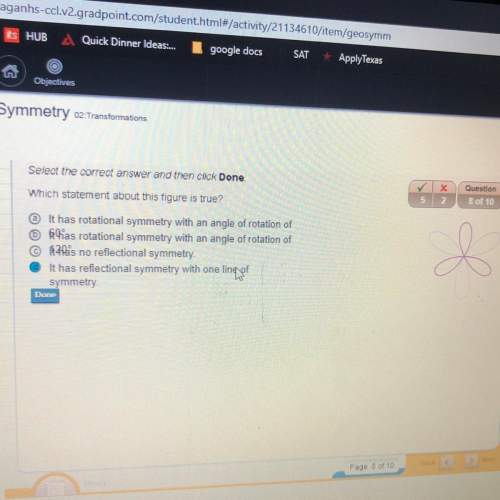
Mathematics, 26.03.2020 16:51 celeste5364
Suppose we use the Naive Bayes model to predict Play (Yes or No) based on two attributes: Temperature and Humidity. Let H denote the event that Play is yes. Let P(H) be the probability that Play is Yes. Let E be the following instance:
Temp Humidity Play
Cool High ?
That is, E denotes (Temp=Cool AND Humidity=High).
Hence, P(E) = P(Temp=Cool AND Humidity=High) is the probability of having cool temp and high humidity.
P(E | H=yes) = P(Temp=Cool AND Humidity=High | H=yes) is the conditional probability of having cool temp. and high humidity given the outcome is Yes.
1) P(E | H=yes) can be computed by P(Temp=Cool | H=yes) * P(Humidity=High | H=yes), i. e. the product of two individual probabilities, only if which of the following (naive) assumption is true?
a. Given the outcome is Yes, Temperature and Humidity are mutually exclusive.
b. Given the outcome is Yes, Temperature and Humidity are dependent.
c. Given the outcome is Yes, Temperature and Humidity are independent.
d. Given the outcome is Yes, Temperature and Humidity are not mutually exclusive.
2) Following the above question, suppose there are 200 instances in the training data:
* 100 instances with outcome Play=yes, among which 20 instances have Temp=Cool, 50 instances have Temp=Mild, 30 instances have Temp=Hot;
* 100 instances with outcome Play=no, among which 50 instances have Temp=Cool, 40 instances have Temp=Mild, 10 instances have Temp=Hot;
What is the conditional probability P(Temp=Cool | H=yes), the probability of having Cool temperature given outcome is Yes?
3) Suppose there are 200 instances in the training data:
* 100 instances with outcome Play=yes, among which 30 instances have Humidity=High and 70 instances have Humidity=Low;
* 100 instances with outcome Play=no, among which 60 instances have Humidity=High and 40 instances have Humidity=Low;
What is the conditional probability P(Humidity=High | H=yes), the probability of having High humidity given outcome is Yes?
4) Given data in the above two questions, what is P(H=yes), the (overall) probability of having outcome Yes?
5) According to Bayes Theorem (rule):
P(H|E) = P(E|H) * P(H) / P(E)
With the above weather data:
P(H=yes | E), i. e. the probability of (predicting) Yes given evidence, can be computed by P(E|H=yes) * P(H=yes) / P(E)
Likewise,
P(H=no | E), i. e. the probability of (predicting) No given evidence, can be computed by P(E|H=no) * P(H=no) / P(E)
Please discuss/answer the following questions:
5.a) How can results from the above questions be used to compute P(H=yes | E) and P(H=no | E)? Show steps and plug in the numbers if you can. Use the Naive Bayes model.
5.b) Discuss whether P(E) matters in the final prediction of Yes vs No. Does it make a difference? Why?

Answers: 1
Another question on Mathematics

Mathematics, 20.06.2019 18:02
The capulet and montague families love writing. last year, each capulet wrote 444 essays, each montague wrote 666 essays, and both families wrote 100100100 essays in total. this year, each capulet wrote 888 essays, each montague wrote 121212 essays, and both families wrote 200200200 essays in total. how many capulets and montagues are there? choose 1
Answers: 2


Mathematics, 21.06.2019 21:30
Suppose that sahil knows that 45 people with ages of 18 to 29 voted. without using a calculator, he quickly says then 135 people with ages of 30to 49 voted. is he correct? how might sohil have come up with his answer so quickly?
Answers: 3

Mathematics, 21.06.2019 22:40
Suppose you are choosing a 6-digit personal access code. this code is made up of 4 digits chosen from 1 to 9, followed by 2 letters chosen from a to z. any of these digits or letters can be repeated. find the total number of personal access codes that can be formed. 492,804 341,172 39,917,124 4,435,236
Answers: 1
You know the right answer?
Suppose we use the Naive Bayes model to predict Play (Yes or No) based on two attributes: Temperatur...
Questions


Mathematics, 21.01.2021 01:10

Mathematics, 21.01.2021 01:10




Mathematics, 21.01.2021 01:10


Mathematics, 21.01.2021 01:10






History, 21.01.2021 01:10

Mathematics, 21.01.2021 01:10

Mathematics, 21.01.2021 01:10


Mathematics, 21.01.2021 01:10





